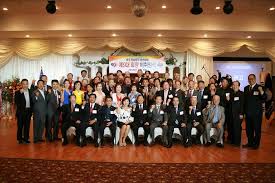CA
ON
럭키 여행사
전화: 416-938-8323
4699 keele st.suite 218 toronto Ontario M3J 2N8 toronto, ON

캐나다 공인 컨설턴트 - 한인크레딧 컨설팅
전화: 416-897-8438
1 High Meadow Place, Unit 2 North York, ON

골프 싱글로 가는길
전화: 647-291-2020
115 York Blvd Richmond Hill Toronto, ON

호남향우회 (토론토)
전화: 647-981-0404
7 Bishop Ave. #2411 Toronto, ON

스마트 디지탈 프린팅 - 인쇄 및 디자인
전화: 416-909-7070
4065 chesswood dr. Toronto, ON
.jfif)
준비된 바이어 그룹 , BAYTREE 이너써클
전화: 416-226-5999
7030 Woodbine Ave. Suite 103 Toronto, ON

놀부 - 한식/일식/중식
전화: 416-221-4700
3 Elmhurst Ave, North York, ON

토론토 기쁨이 충만한 교회
전화: 416-663-9191
1100 Petrolia Rd Toronto, ON

조준상 (로열르페이지 한인부동산 대표)
전화: 416-449-7600
1993 Leslie St. Toronto, ON

럭키조경 & 나무자르기
전화: 647-564-8383
4699 Keele St. Unit 218 Toronto, ON

1004열쇠
전화: 416-895-1004
4 Blakeley Rd. Toronto, ON

행복부동산 -수잔정 Home Standards Brickstone Real
전화: 647-866-7878
180 Steeles Ave W Unit 30, Thornhill, ON

It would be a place where all the visitors including me share the life stories and experiences through their activities,especially on life as a immigrant.
Why don't you visit my personal blog:
www.lifemeansgo.blogspot.com
Many thanks.
블로그 ( 오늘 방문자 수: 306 전체: 267,869 )
희망을 안겨준 대기만성형 PGA 챔피언 양용은 - WSJ.
lakepurity
2009-08-22
이다음에 자라서 훌륭한 운동선수가 되겠다는 어렸을적의 꿈을 버리지 못하는 사람들에게 이번주 PGA 챔피언을 차지한 양용은의 경우가, 그들에게 많은 희망을 심어주는 역활을 했다.
From Late Bloomer to Champion
PGA Winner Y.E. Yang, 37, Took Up Golf at 19; 'My Approach Had Less Pressure'
By JOHN PAUL NEWPORT
For those unwilling to abandon their childhood dreams of becoming sports stars when they grow up, Y.E. Yang's victory Sunday at the PGA Championship offers hope. The South Korean didn't take up golf until he was 19 and didn't attract much attention internationally until his mid-30s. Nineteen isn't a Walter Mitty-ish age to take up golf, of course, but it's not infanthood either, which is when Tiger Woods, Phil Mickelson and Wolfgang Amadeus Mozart began excelling at their chosen crafts. Mr. Yang says there are some advantages to taking up golf late.
"My approach had less pressure," he said shortly after his victory at Hazeltine on Sunday, through an interpreter. "My life has been sort of slow, actually. I have always tried to take it one step at a time. I didn't look and envision myself 10 years or 20 years ahead." Compared with most aspiring young golfers, who are steeped in television images of the stars they hope some day to become, he never suffered the psychic toll of feeling he had to be extremely good at a very young age, he said.
Reuters
Y.E. Yang, top, was a weightlifter before starting golf at 19.
He still doesn't appear to feel much pressure. Mr. Yang's composure Sunday in staring down Mr. Woods, who hitherto had never lost a major in the 14 times he began the final round with a lead, was the most impressive part of his round. "I wasn't that nervous, honestly, because it's a game of golf," Mr. Yang said. "It's not like you're in an octagon where you're fighting against Tiger and he's going to bite you or swing at you with his nine iron. The worst I could do was lose to Tiger. I really had nothing much at stake, and that's how I played it."
Mr. Yang’s unique personal history and his status as a relative newcomer in the top echelons of international golf served him well at Hazeltine. Although he clearly respects Mr. Woods, he seems less caught up in the Tiger myth than other challengers are―in part, no doubt, because he held off Mr. Woods down the wire once before, in winning the HSBC Champions in China in 2006. He may also be less burnt out than most 37-year-old Tour pros from years of scratching and clawing and disappointments at the highest level.
The two most successful PGA Tour pros not to have played golf as kids are 12-time winner Calvin Peete and Larry Nelson, who won three majors in the 1980s (two PGAs and a U.S. Open) after taking up golf at 21. Mr. Nelson, now 61, said that starting late is an improbable route to stardom but not without its pluses. "The maturity level starting at 19 is so much better. You don't have to deal with a lot of stuff that someone starting at 10 has to deal with, mainly parents," he said.
You also may not have to unlearn things you learned earlier, either because of poor instruction or because your body changes and your old, perfectly good swing no longer works. Mr. Nelson, who switched to golf when injury derailed his aspirations as a baseball pitcher, practiced at a range for six months, while studying Ben Hogan's instructional book "Five Lessons: The Modern Fundamentals of Golf," before he first ventured onto a golf course (and broke 100 in his first round). "Apparently I learned it right the first time," he said. As a result, unlike most beginners, he always felt that he could rely on his swing and thus developed a confidence that was hard to shake. "I see that kind of confidence in Yang's game, too," he said.
View Full Image
PGA Tour/Getty Images
Larry Nelson was a pitcher before starting at 21.
Mr. Yang's story is remarkably similar to Mr. Nelson's. His main sport had been bodybuilding, and his ambition was to start a gym, but a torn anterior cruciate ligament in his left knee forced him to find another outlet. On a friend's advice, he got a job at a small driving range (100 yards only, players hit from mats into nets) and began making a few swings himself. After two months, with a growing addiction to the game, he moved to another range, where he earned $200 a month plus board and a room at the facility, and taught himself correct form by studying two instructional videos, one by Jack Nicklaus and one featuring Nick Faldo with David Leadbetter. Without much money―he is one of seven children, the son of a vegetable farmer who discouraged him from taking up such an elite sport―he didn't play his first round on a course until three months later (where he did not break 100).
He continued to practice during his 18 months of mandatory military service, and shortly after being discharged passed the test to become a "semi-pro," meaning he could teach golf but not play in tournaments. Two years later, when he learned that people could make a living playing golf and not just teaching it, he took and passed a second test and joined the Korean PGA Tour. In 1997 he was rookie of the year. He won his first of four events on the bigger, richer Japan Golf Tour in 2004, and his first event on the PGA Tour, the Honda Classic, this year. His winner's check at last week's PGA Championship was $1.35 million.
Although they started golf later in life than most Tour players, Mr. Yang and Mr. Nelson had one vital thing in common: extensive athletic experience. "That's huge," said Jim McLean, a top U.S. instructor. "You can learn golf as an adult and have fun with it even without having played other sports, but if you've never really got the hang of sequential motion the way athletes do, it's very difficult to become a low-handicap player."
Mr. Yang as a boy played baseball, basketball and soccer, but his weightlifting might have been just as important. Through an interpreter, he told me this week that the explosiveness required in weightlifting moves helped him generate power in golf. Bob Rotella, the noted sports psychologist, has worked with several weightlifters and also sees significant crossover. "It requires very strong mental discipline. Before you do a lift, you have to see it clearly in your mind like you do a golf shot, and if you can't see it, you aren't going to be able to make the lift."
It's not impossible for grown-ups to learn golf successfully. Mr. Nelson's father, a gifted athlete himself, didn't start playing until he was 50 and shot his age at 72. One of Mr. McLean's students, the financier George Roberts, took up the game at 47 and became a four-handicapper. But such cases are rare, mostly because adults seldom have the discipline or time to do it right. "By the time you're 40 or 50, a lot has happened. You've had business reversals or a divorce or injuries or whatever, and maybe it's not fear, but you're afraid to give up control," Mr. McLean said. "As a kid you have no fear, you're a clean slate―you can abandon yourself to the game without judgment."
Mr. Yang seems to have learned the game at 19 something like a kid does, and so far seems to have kept it fresh the way kids do, too.